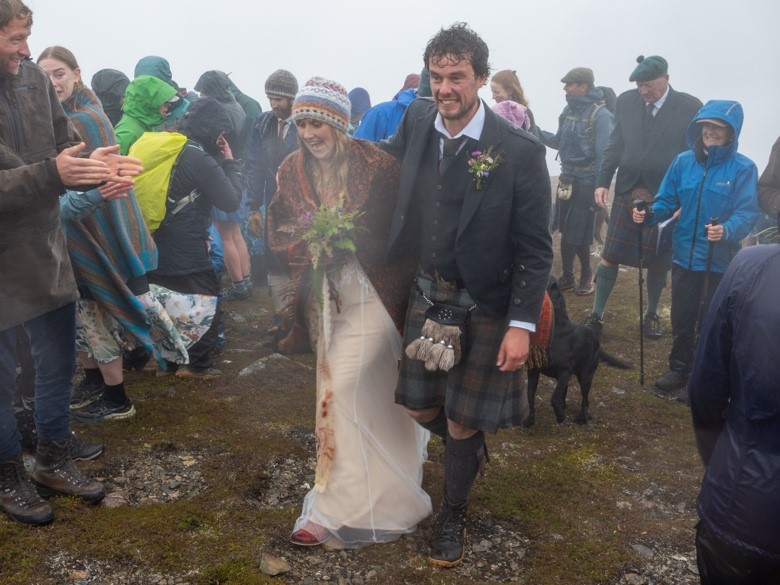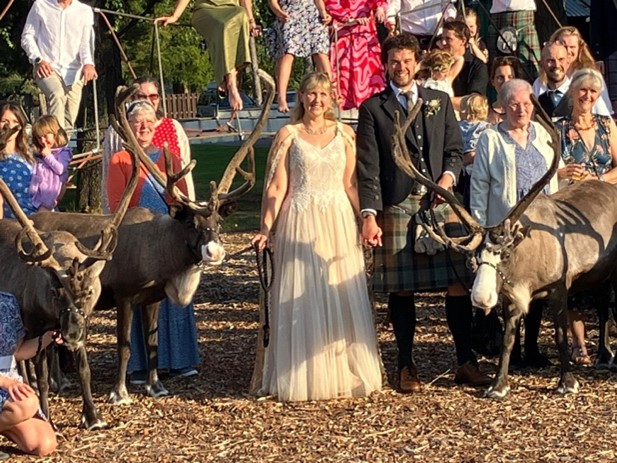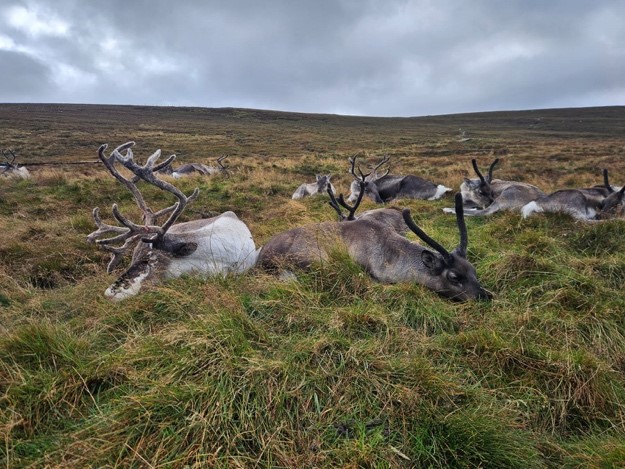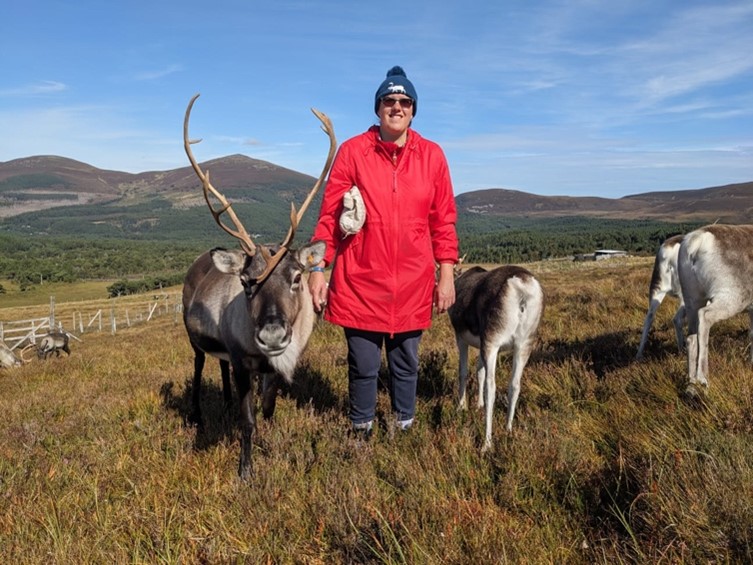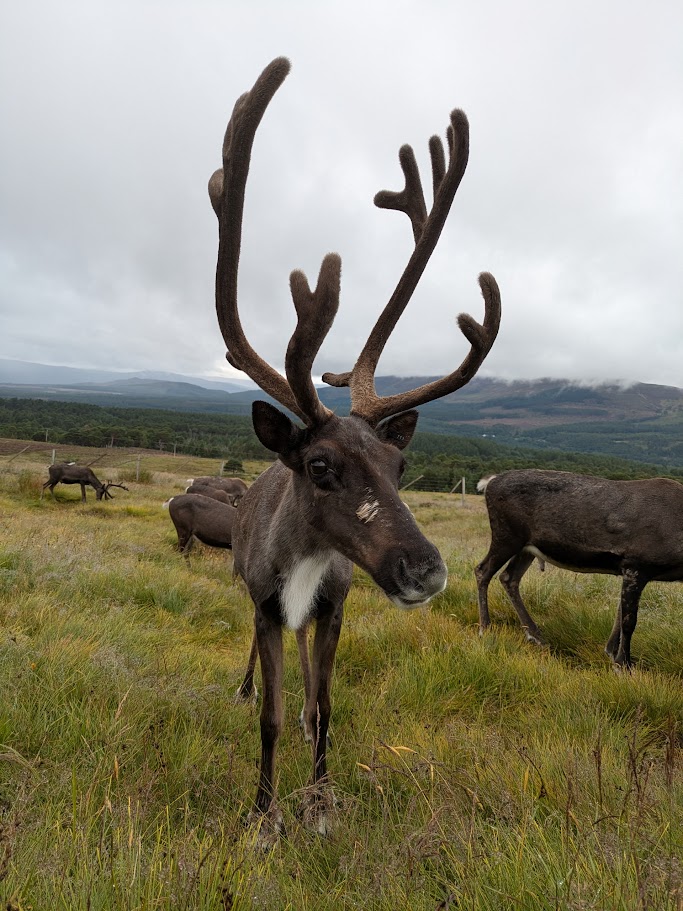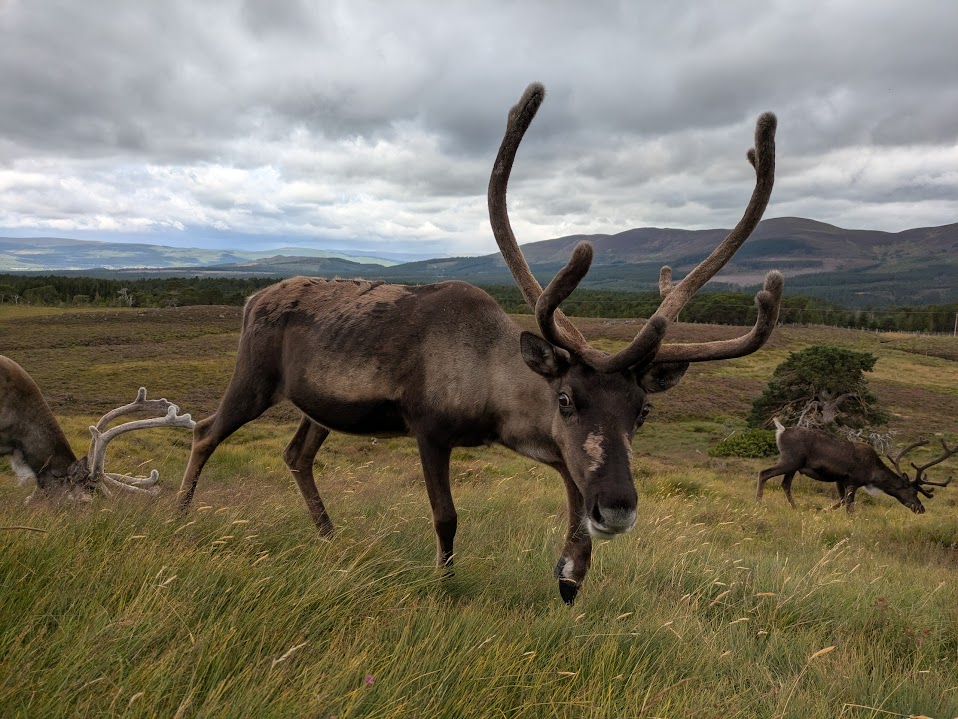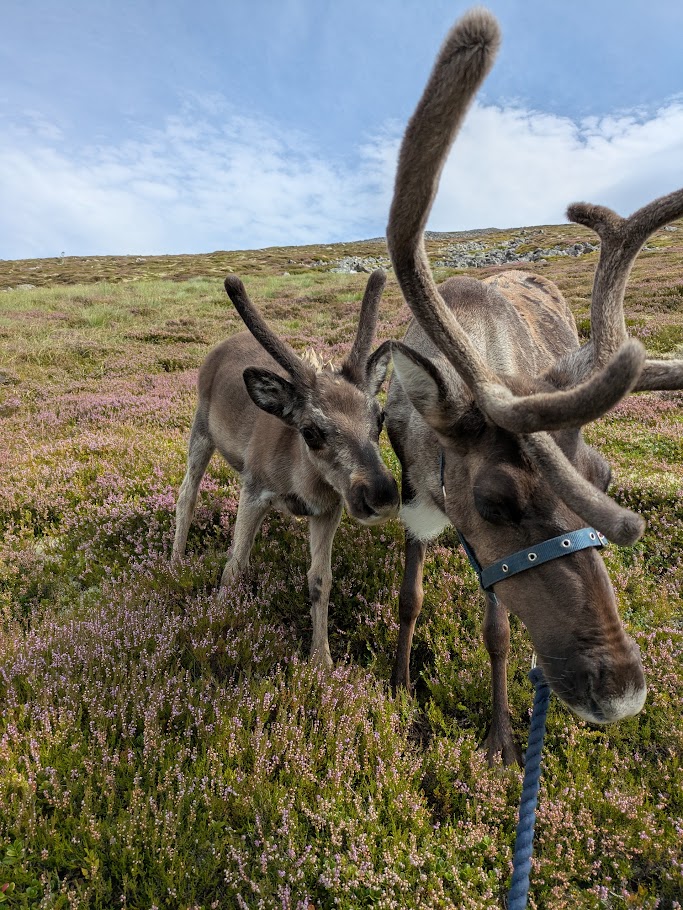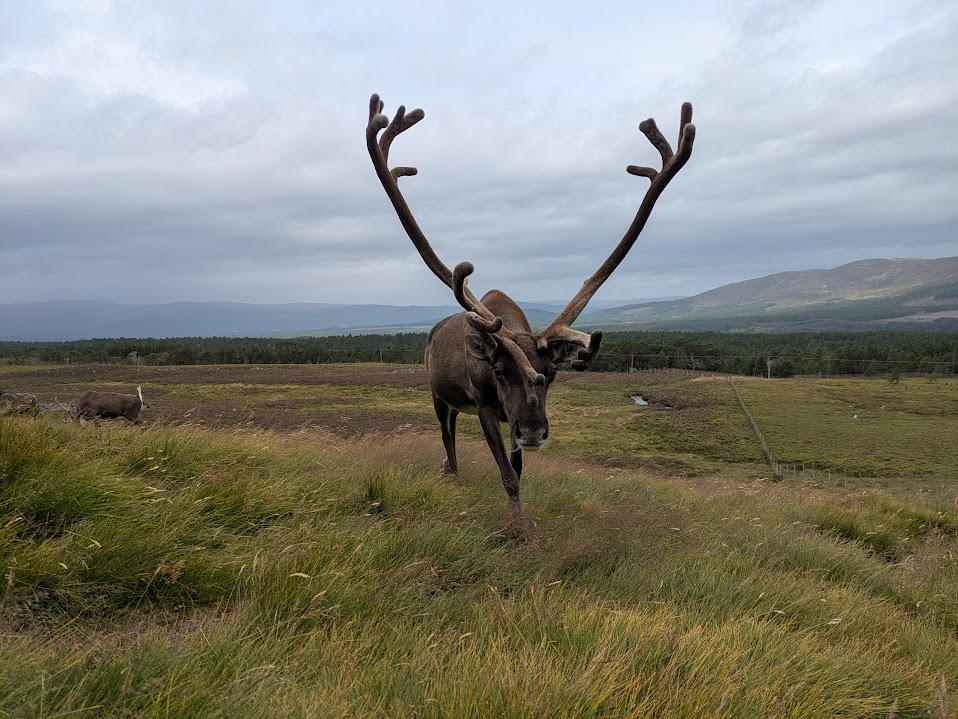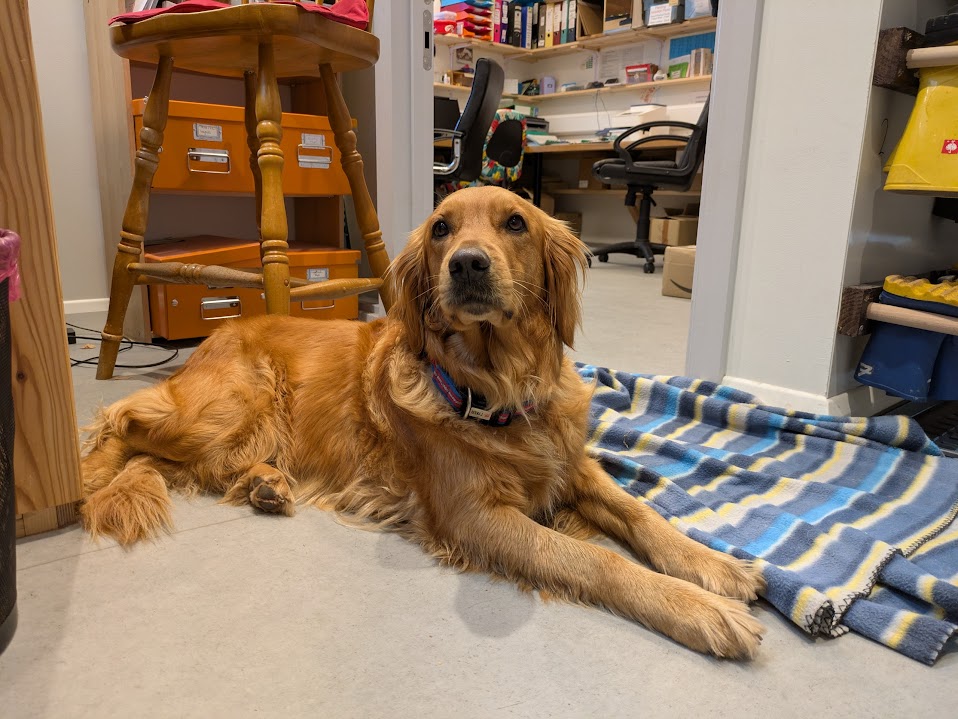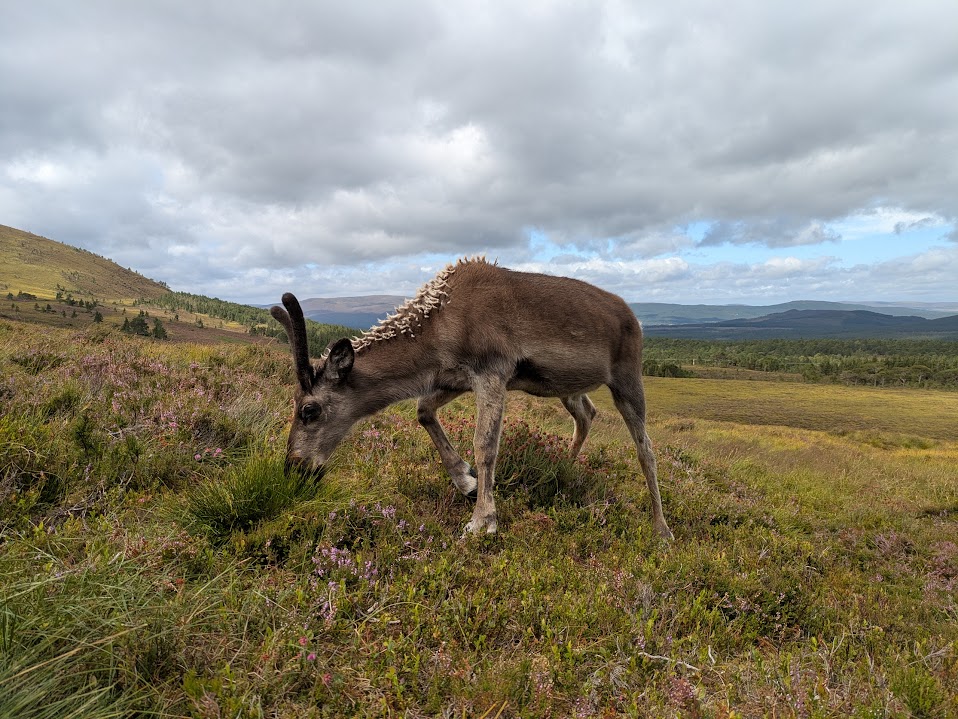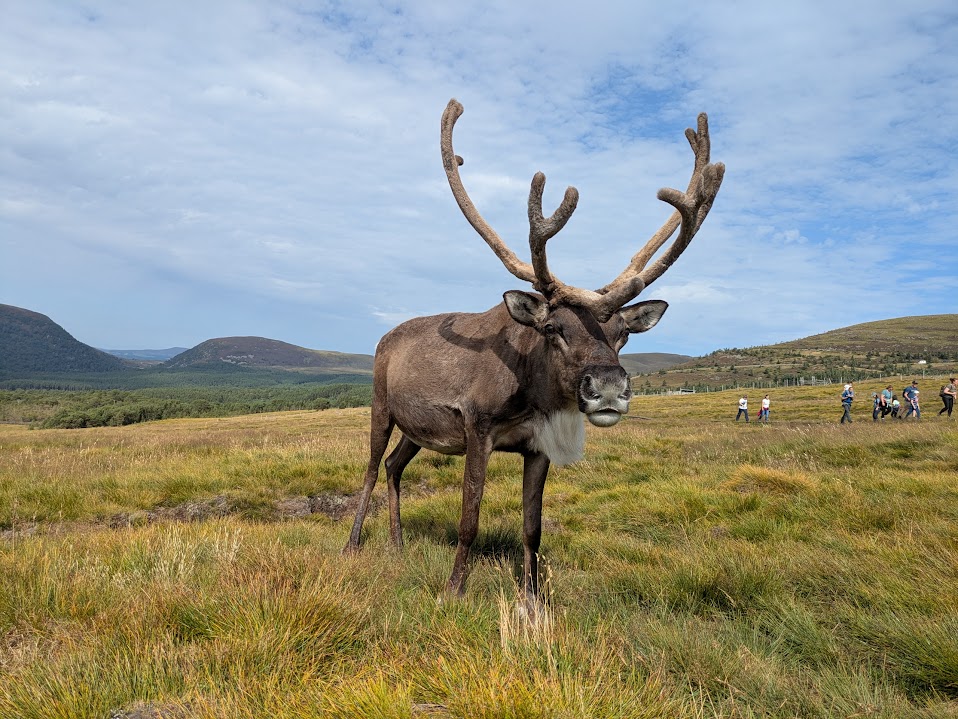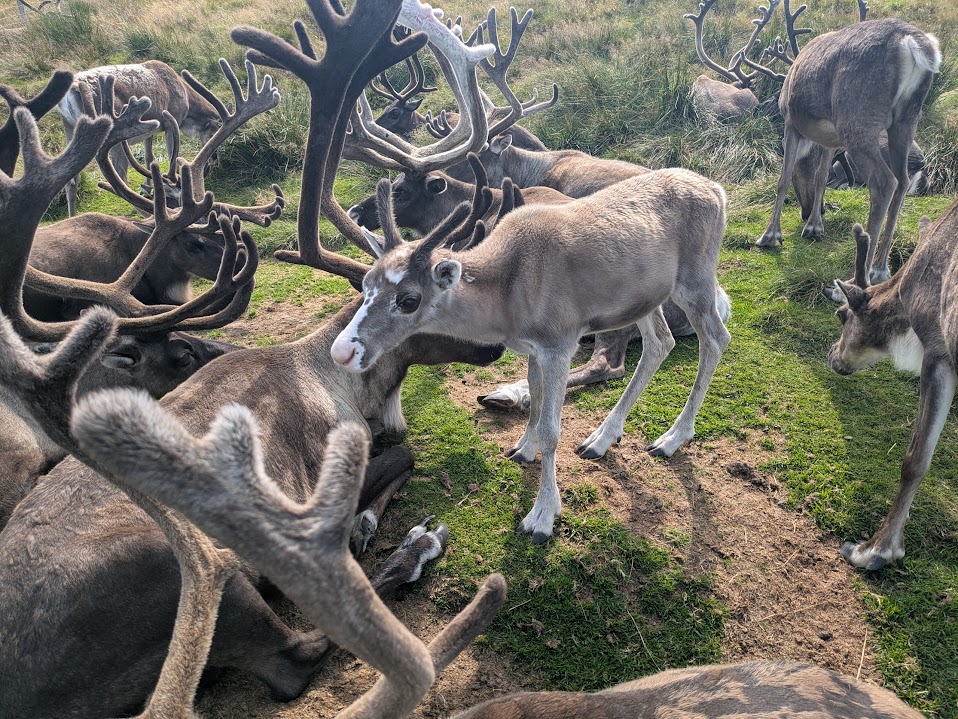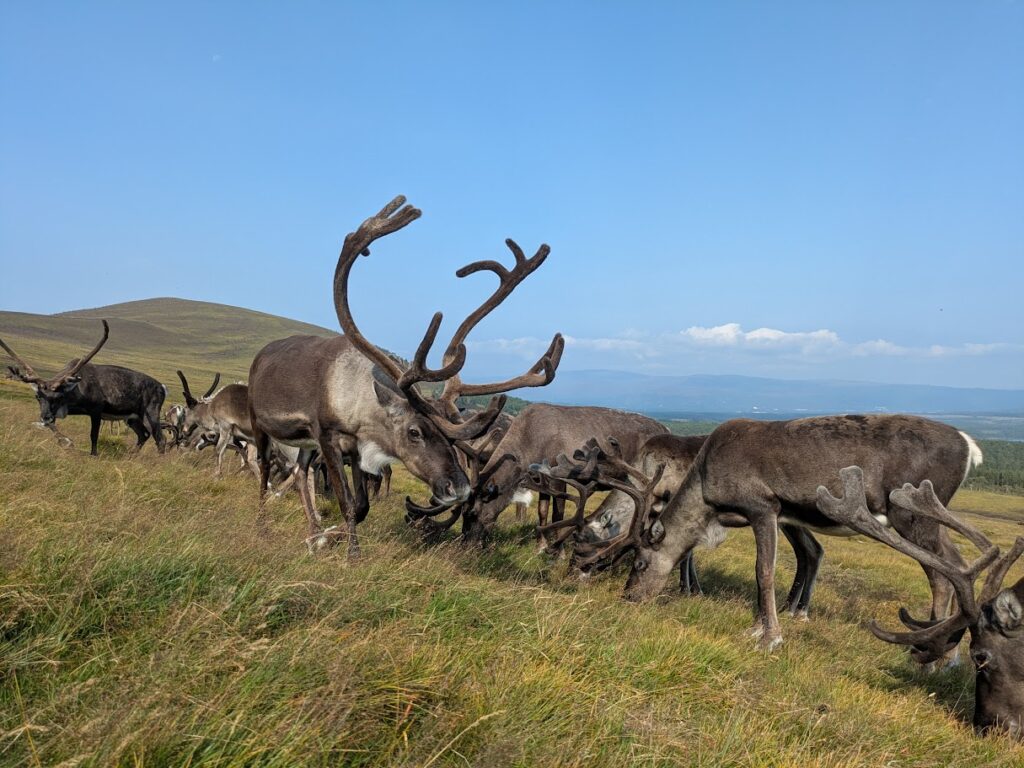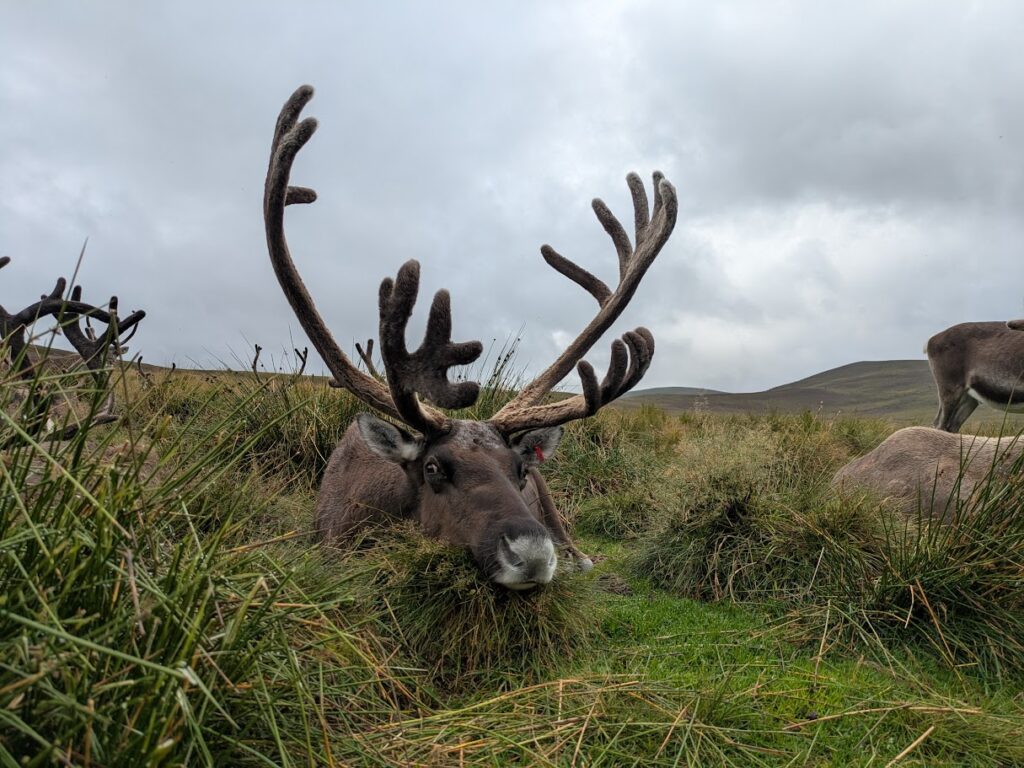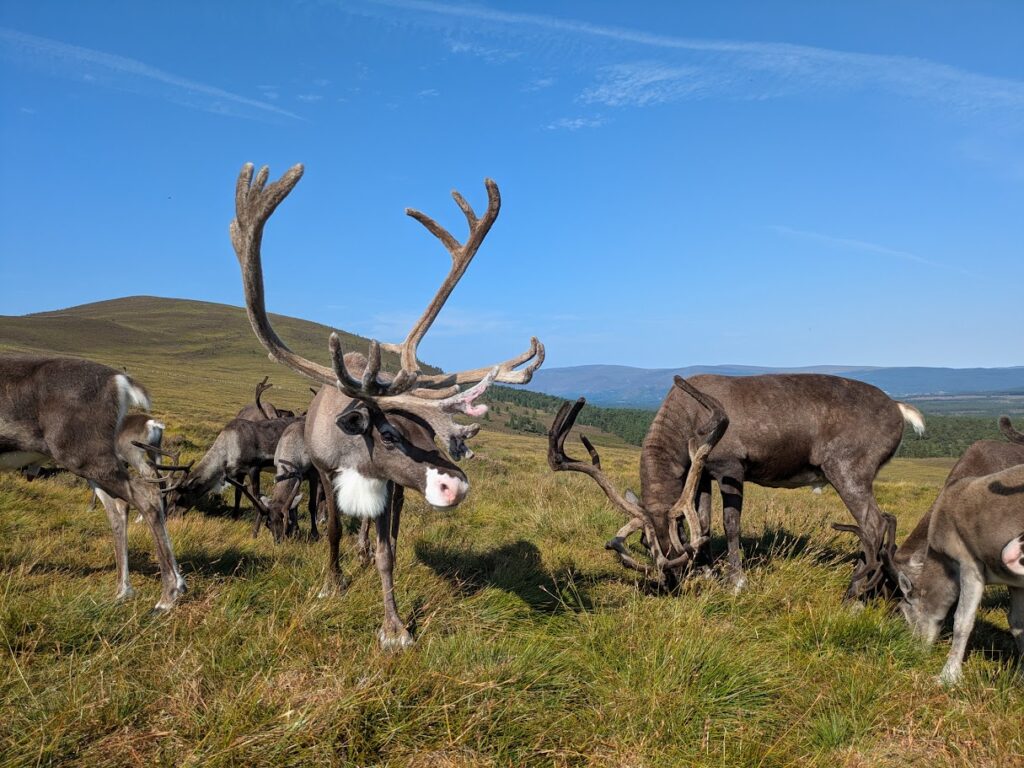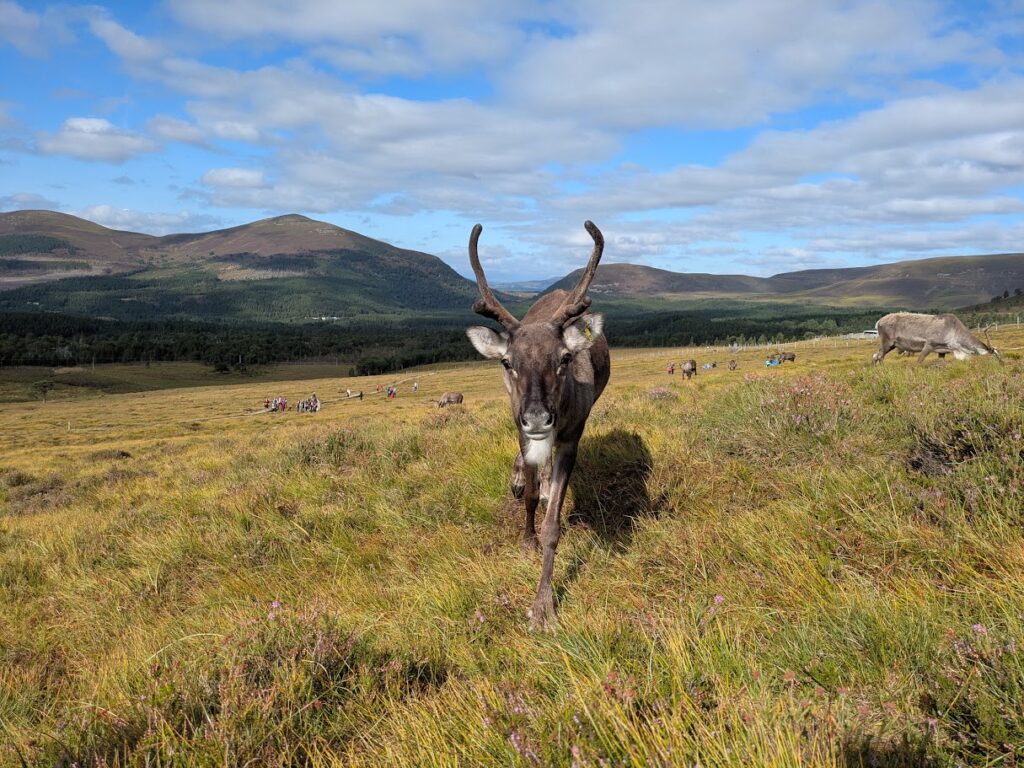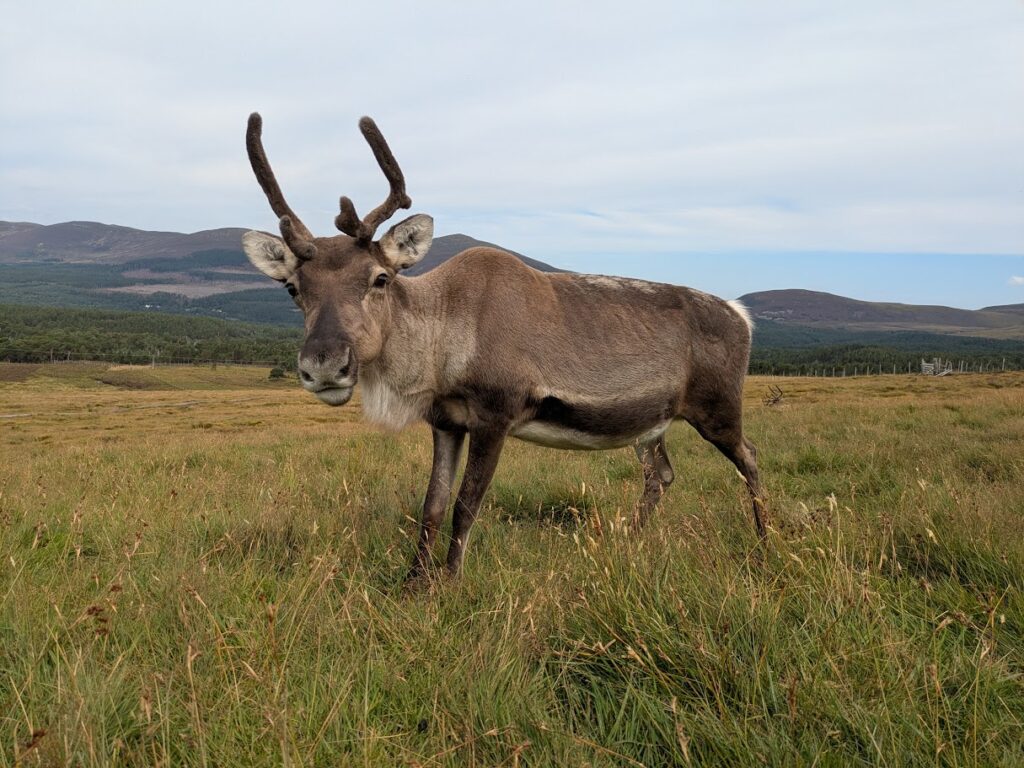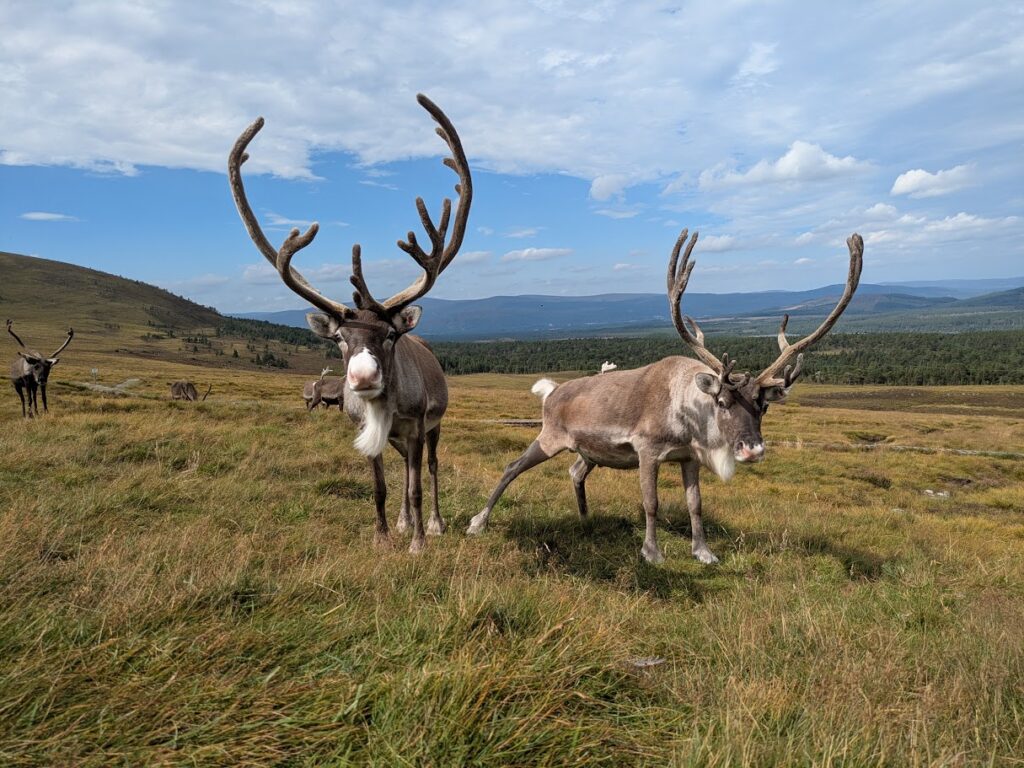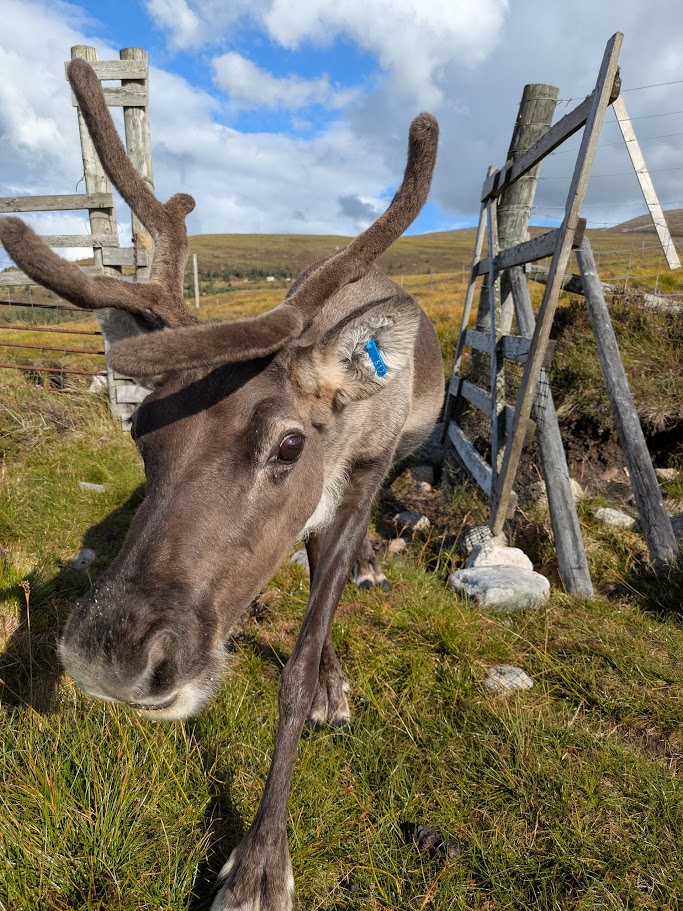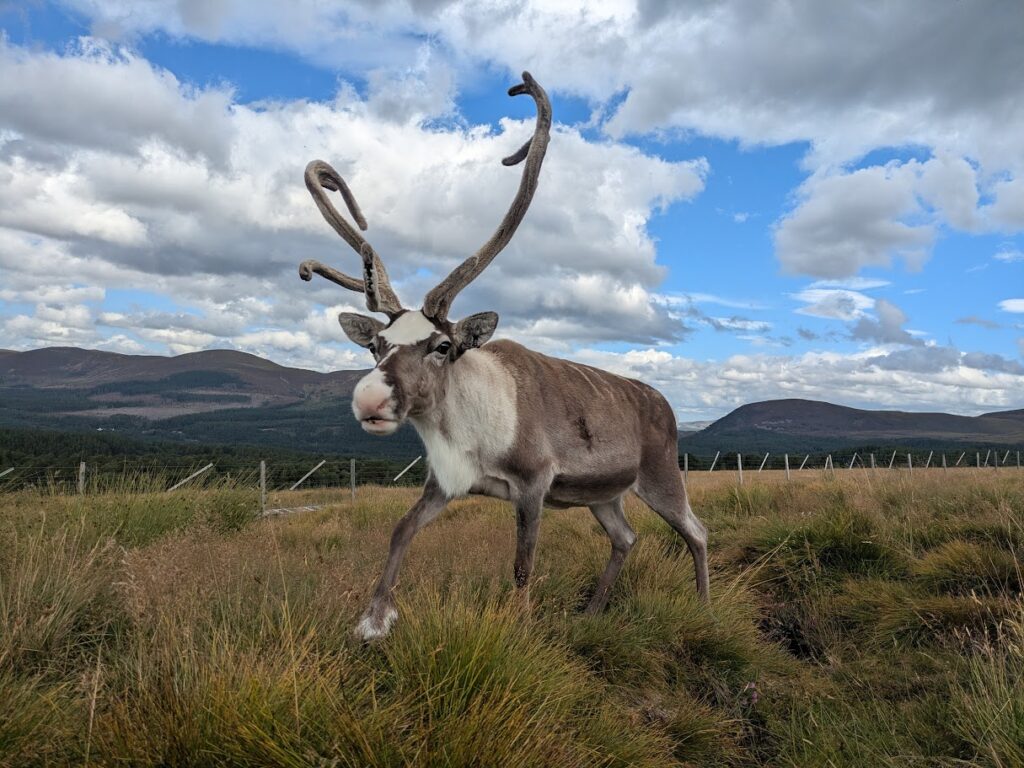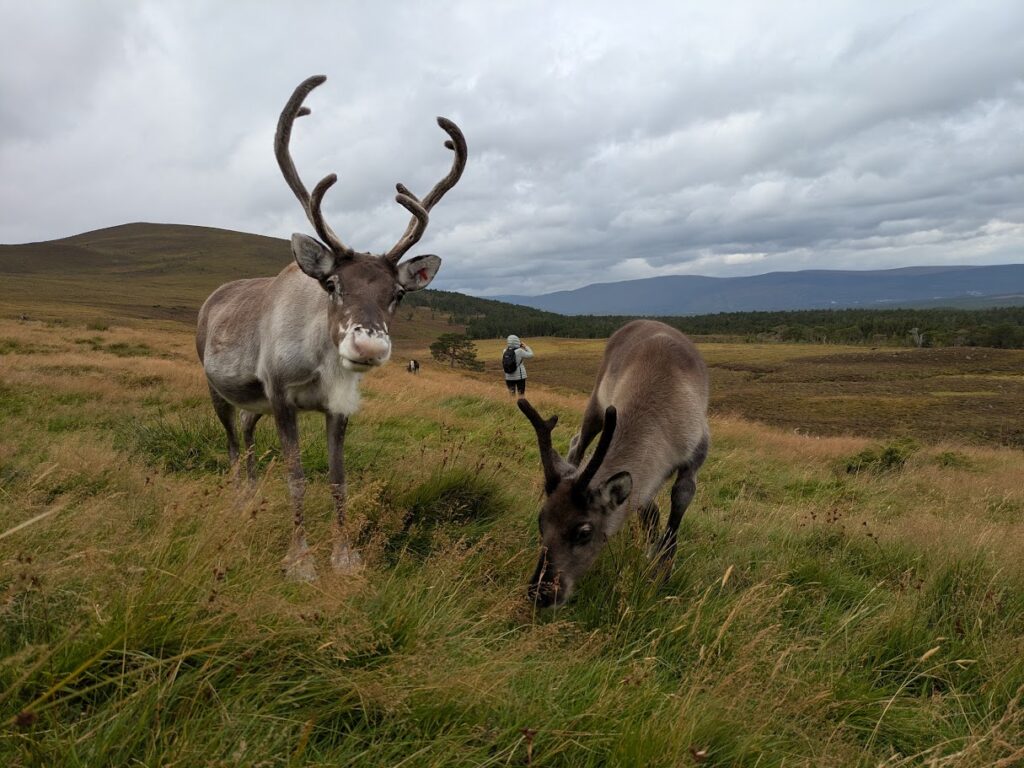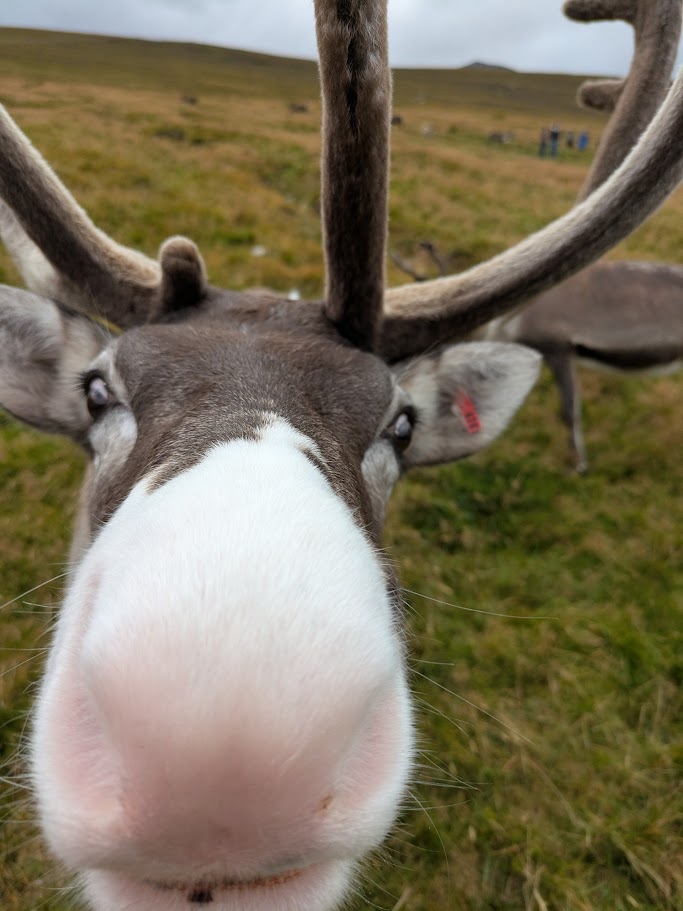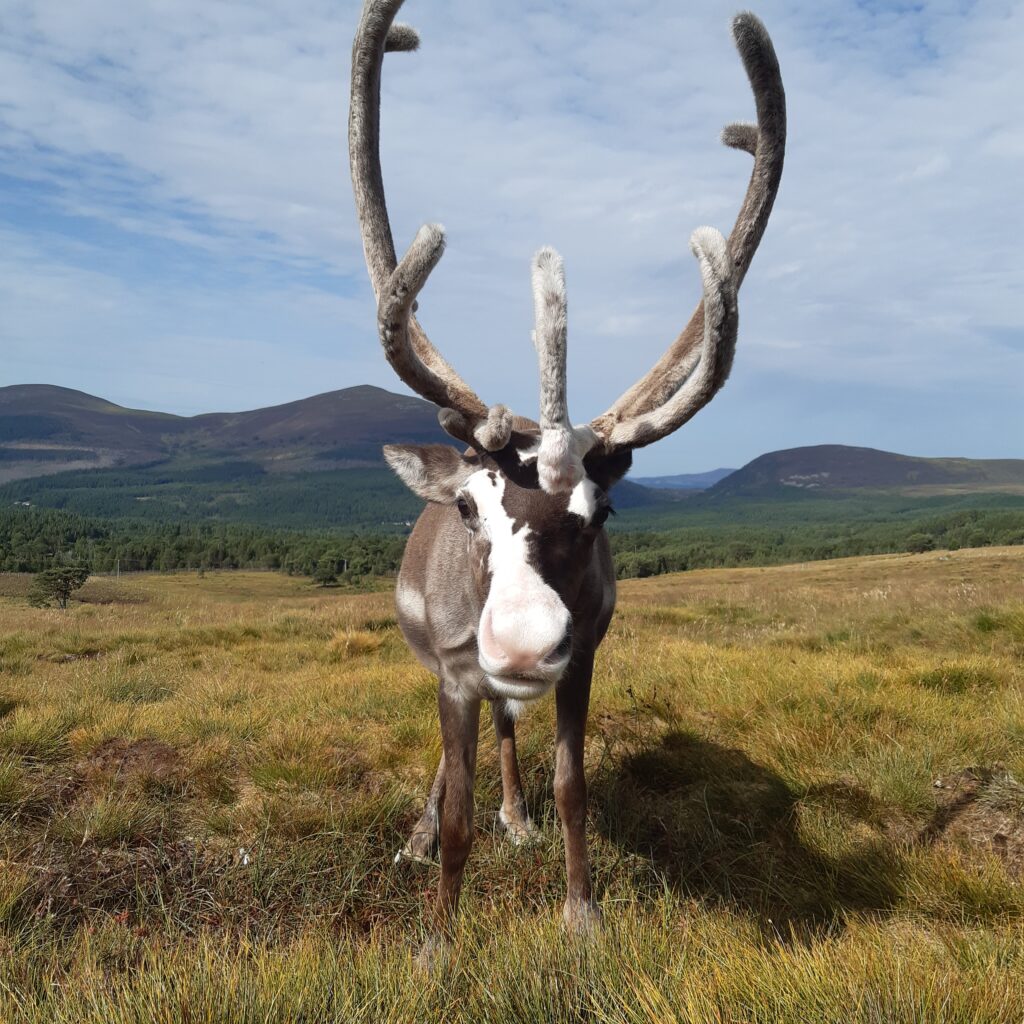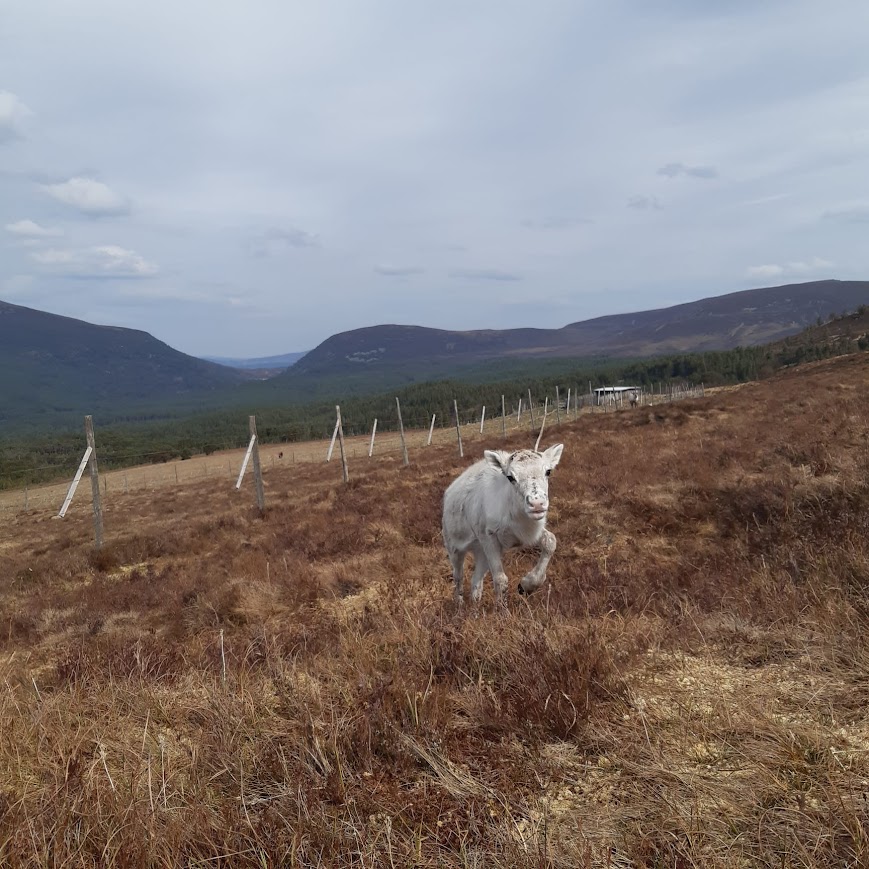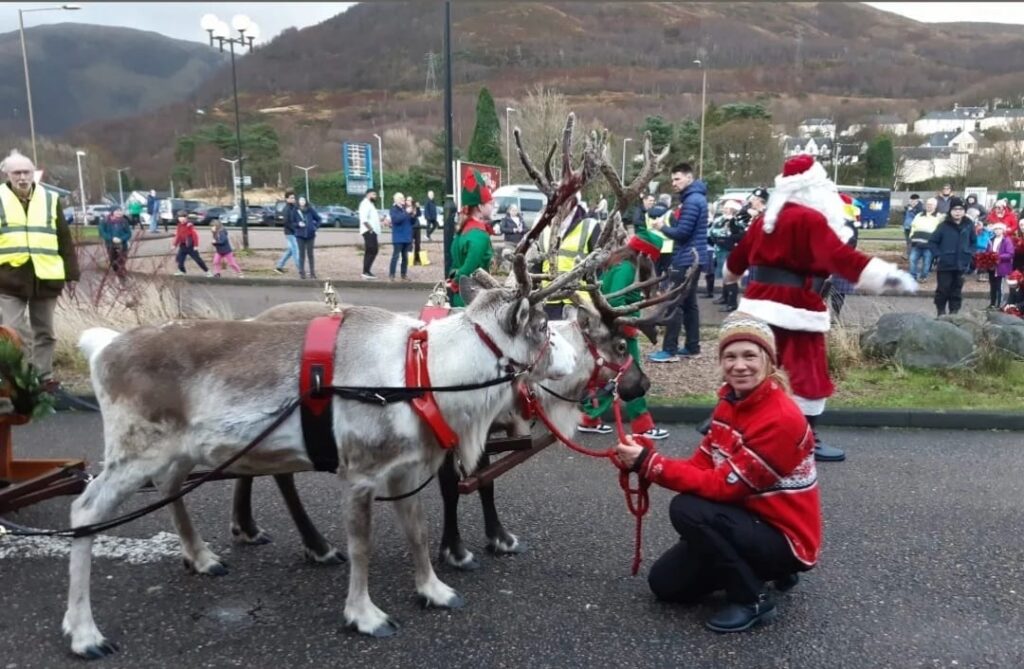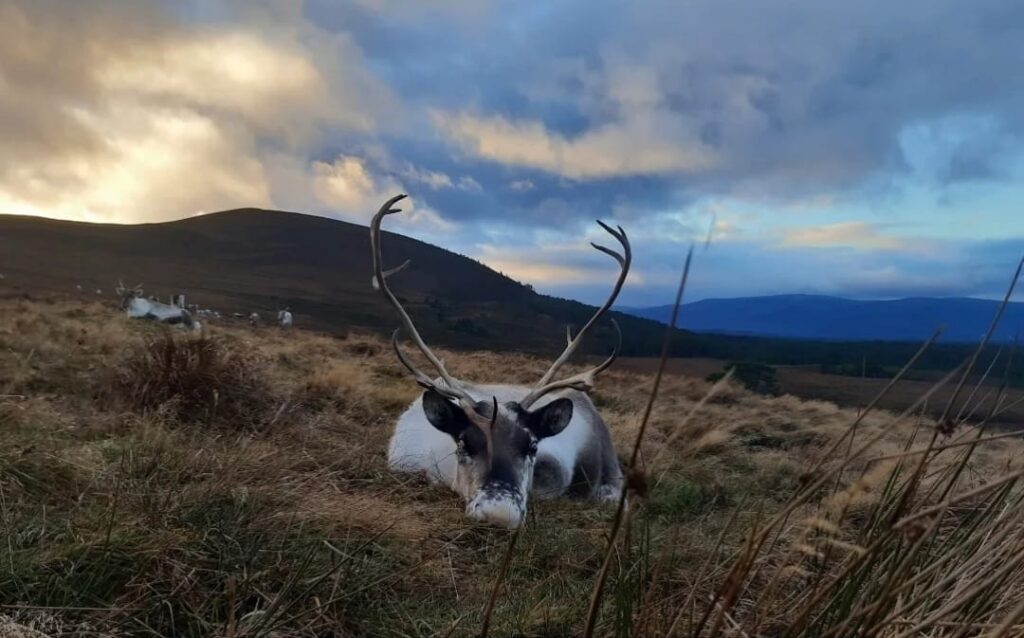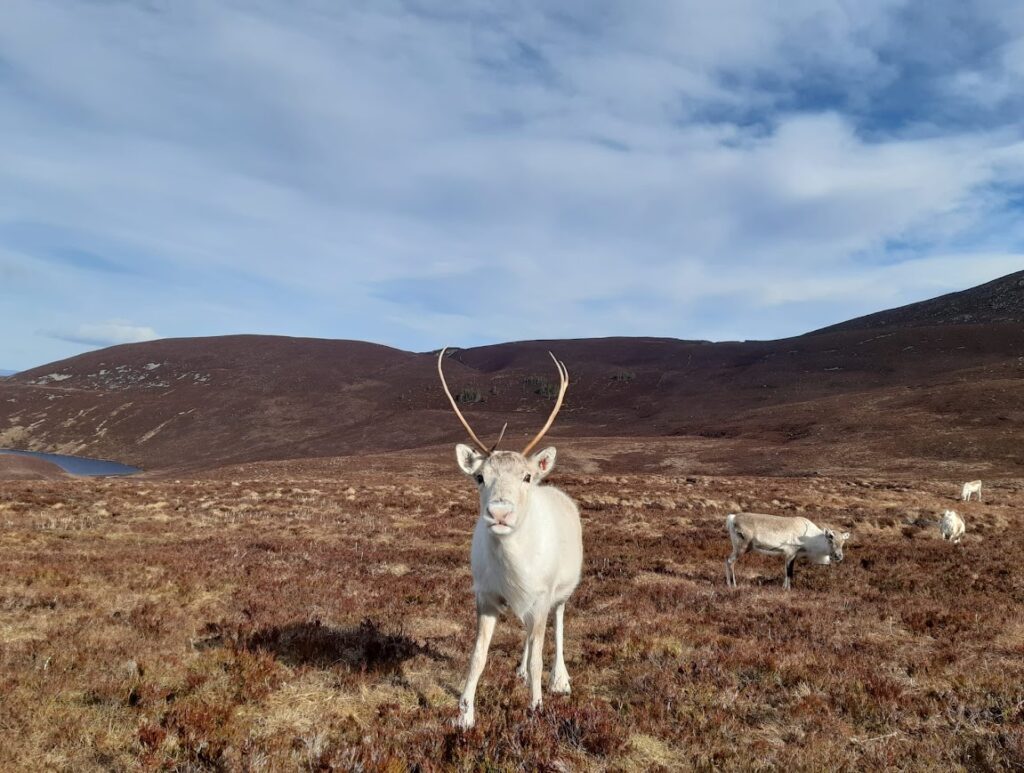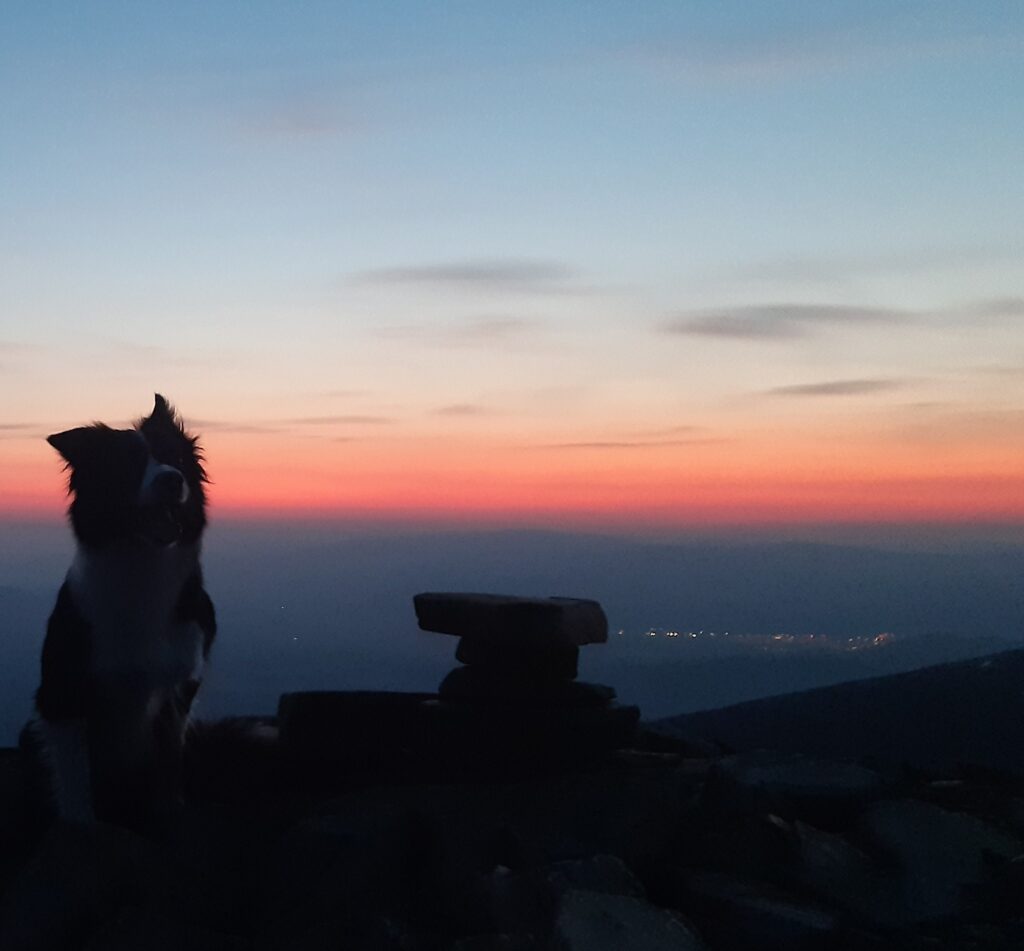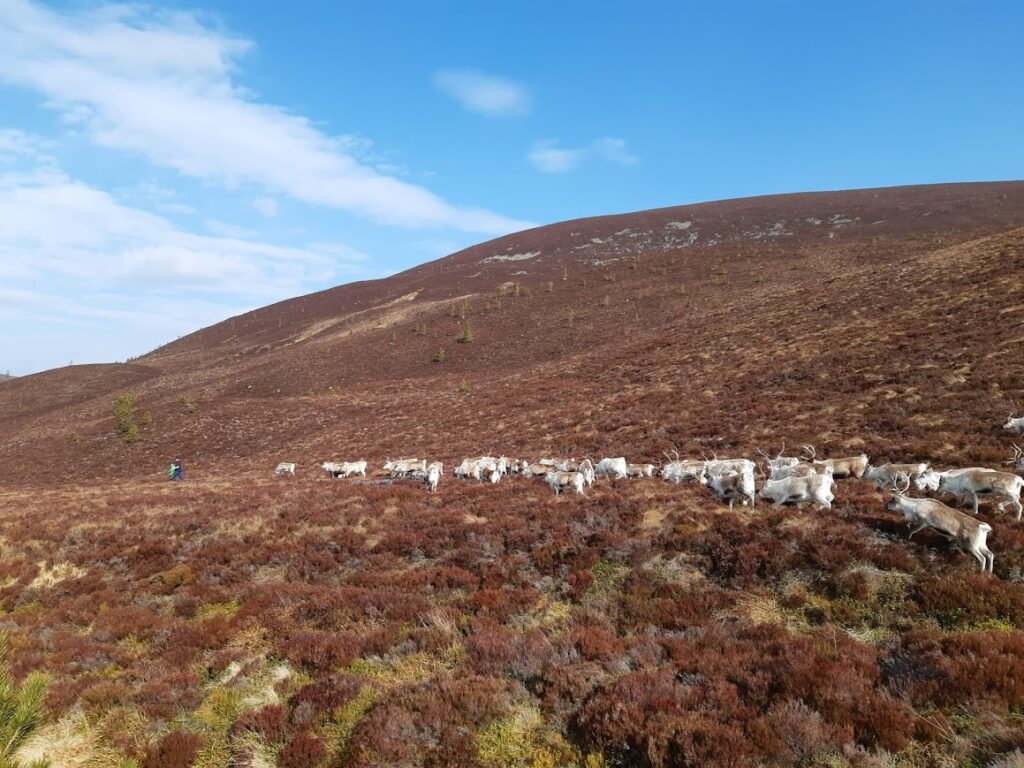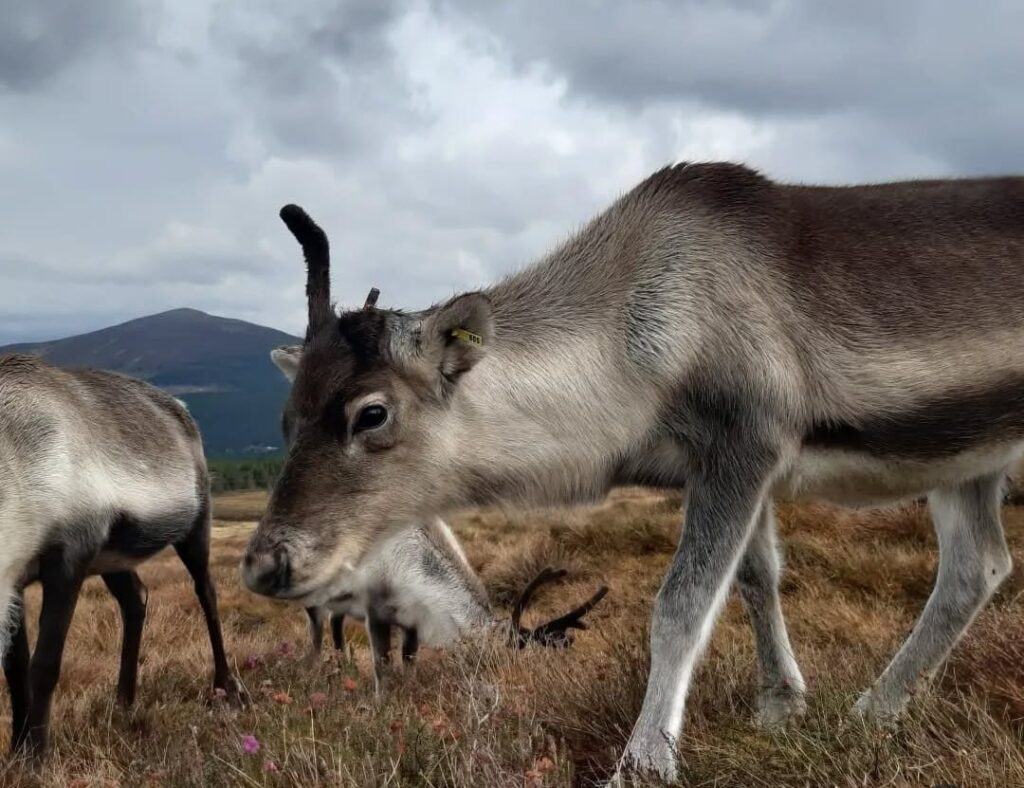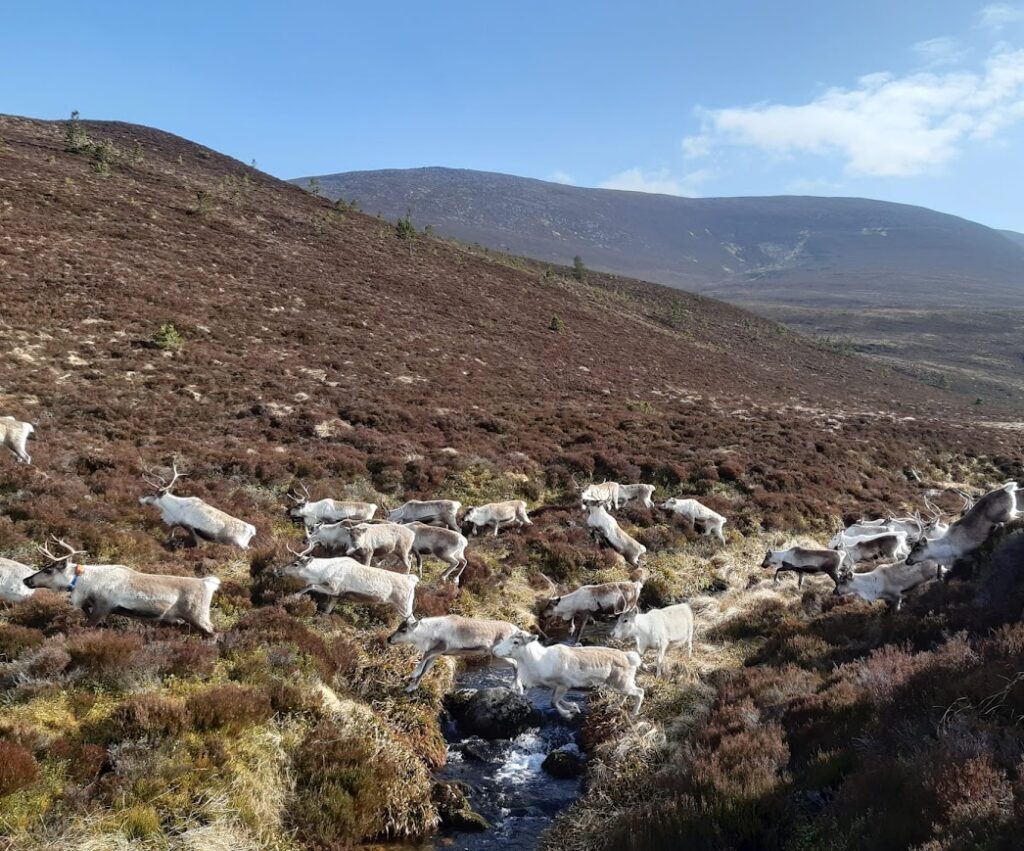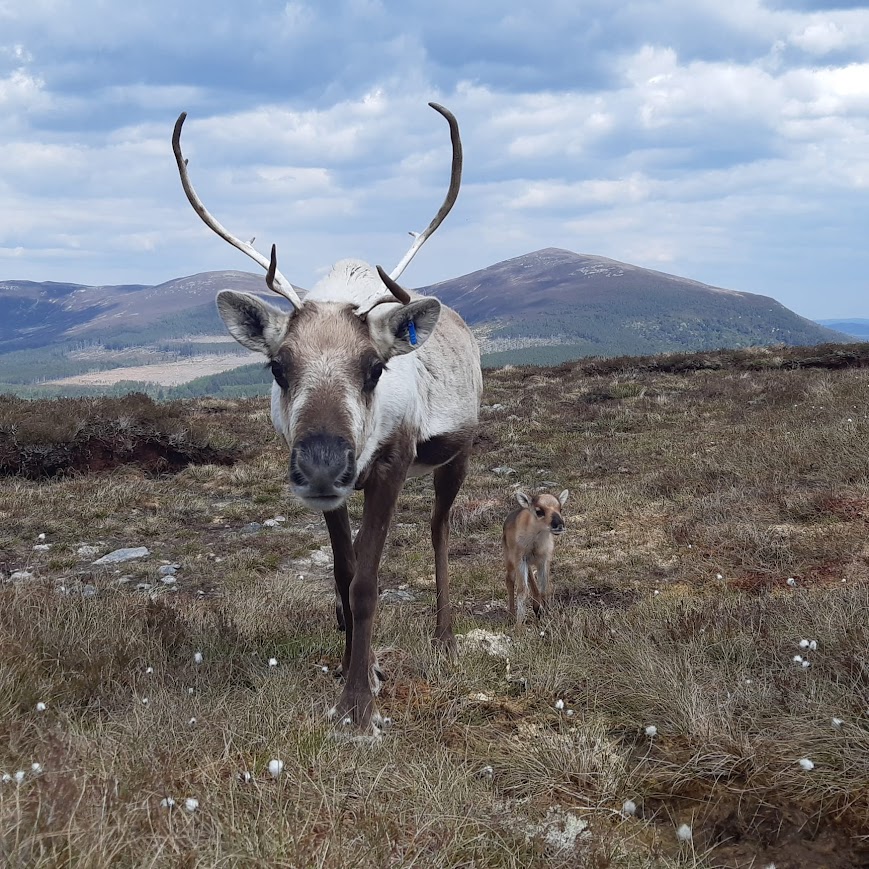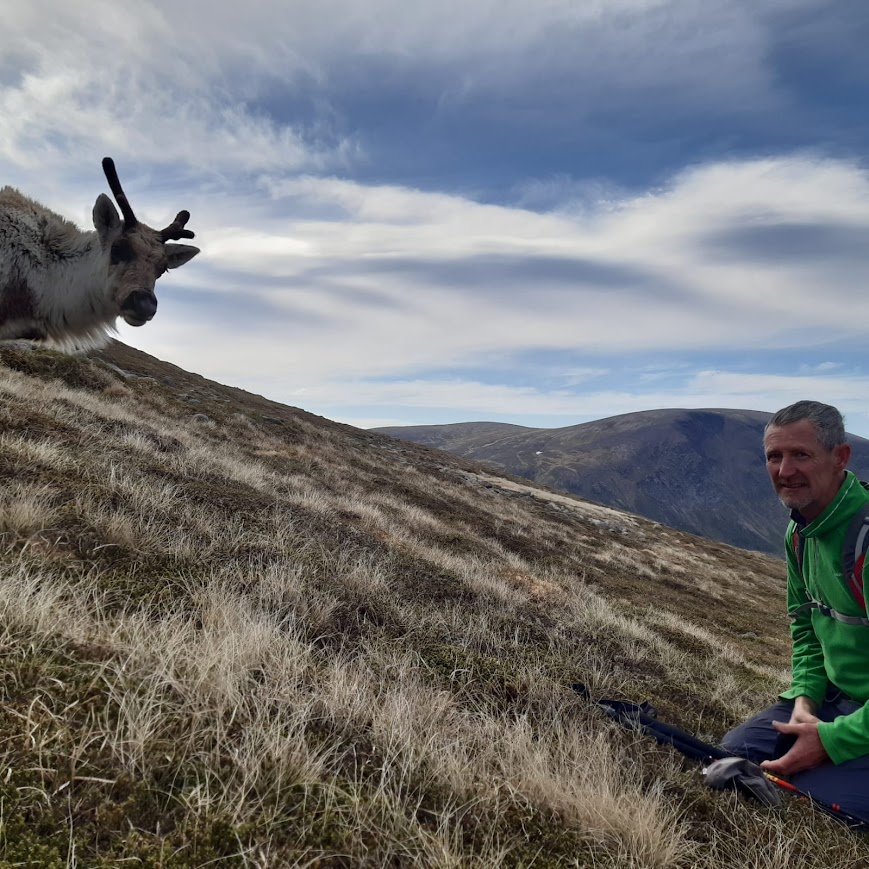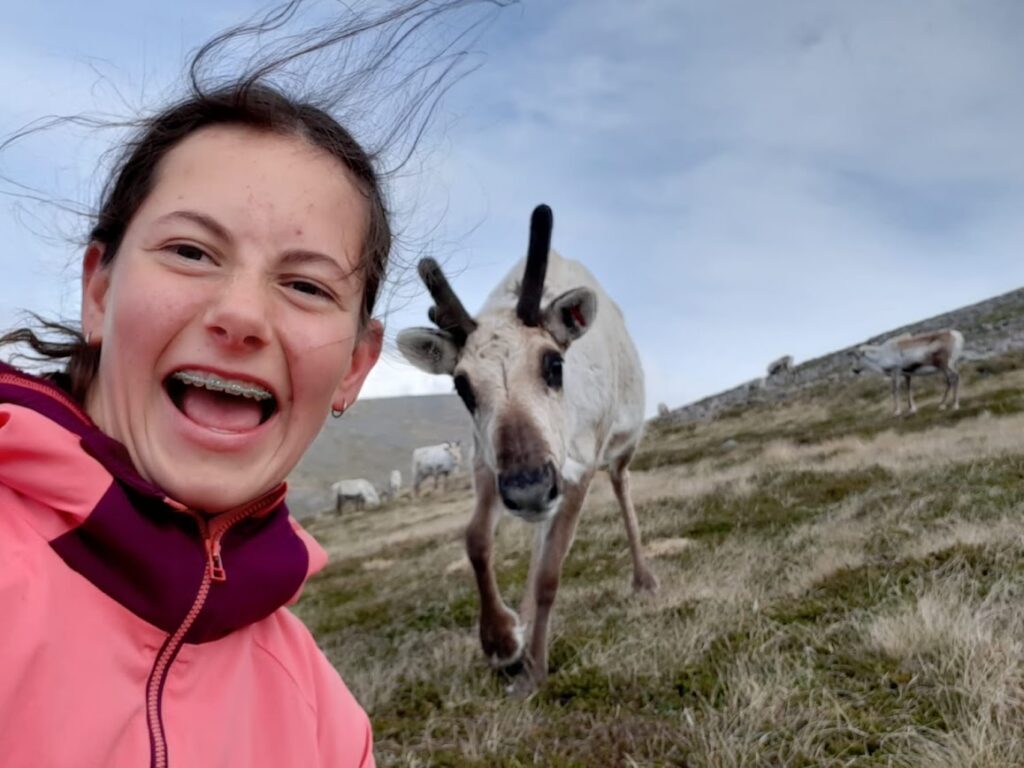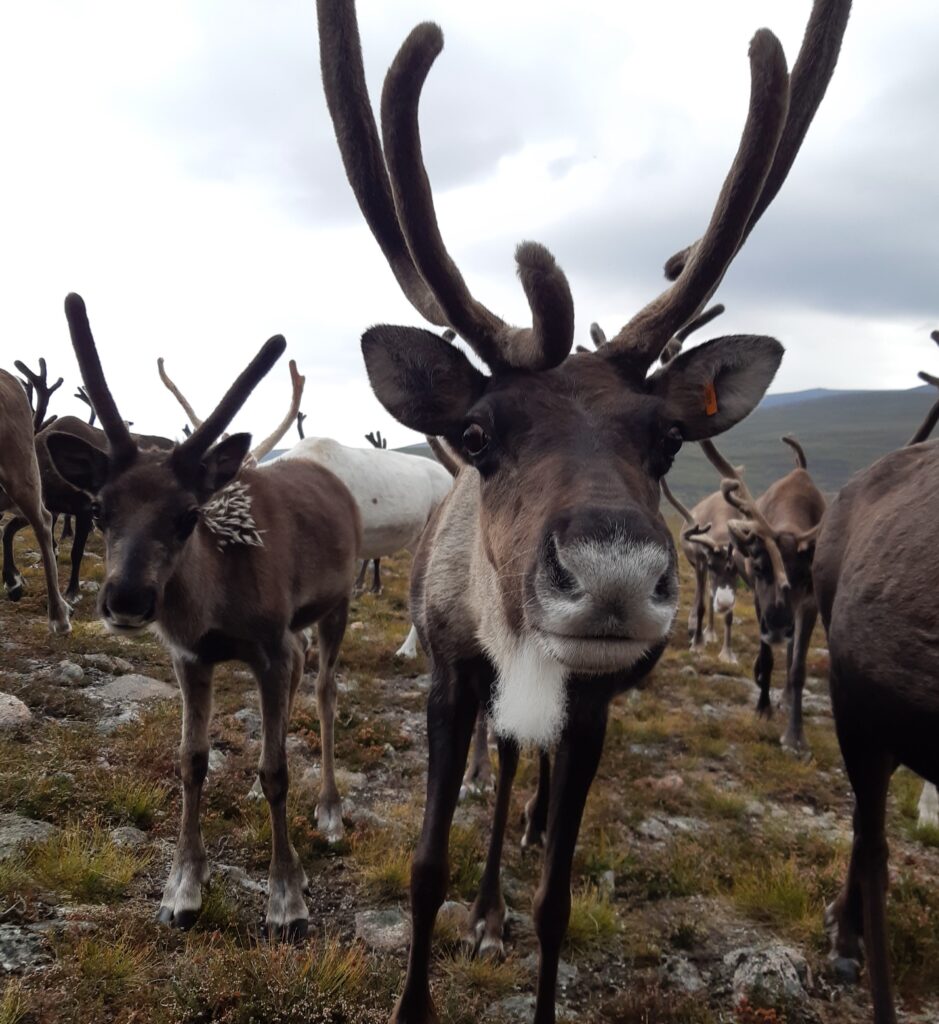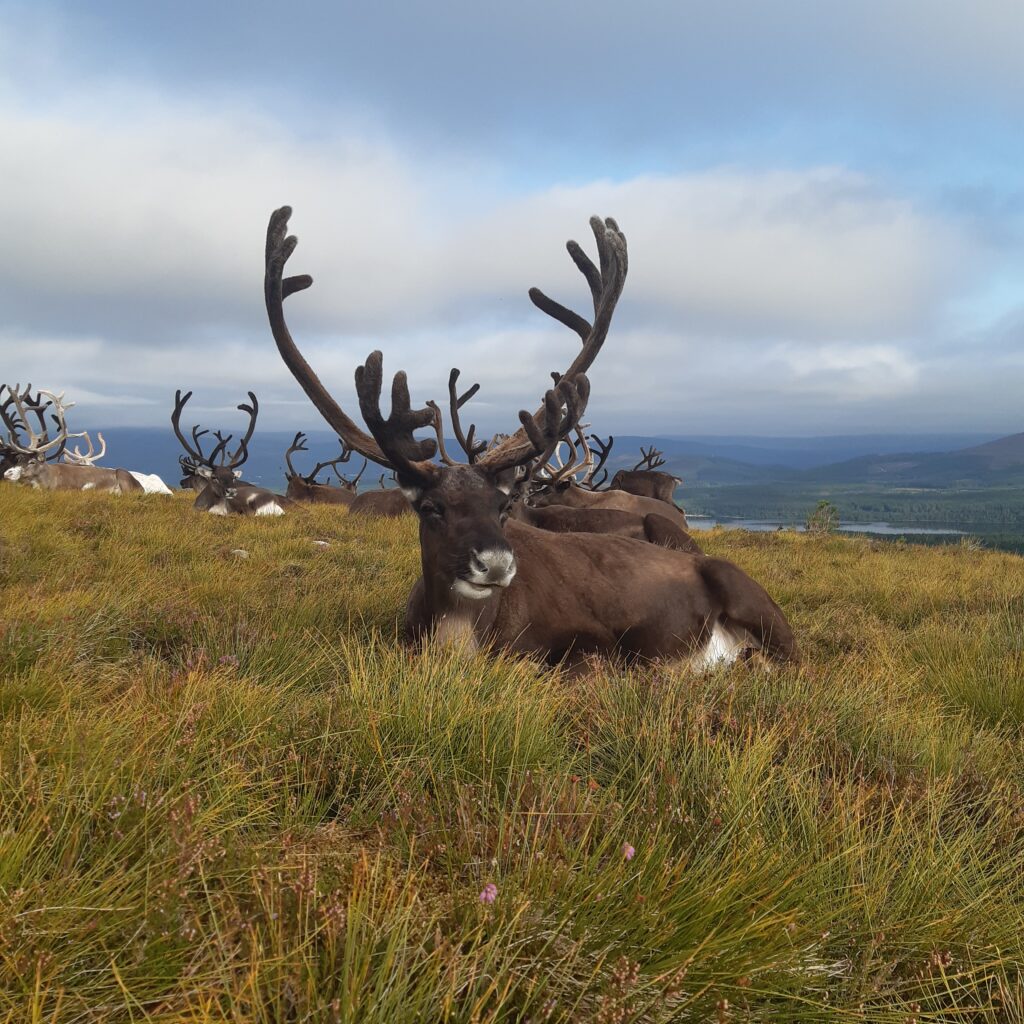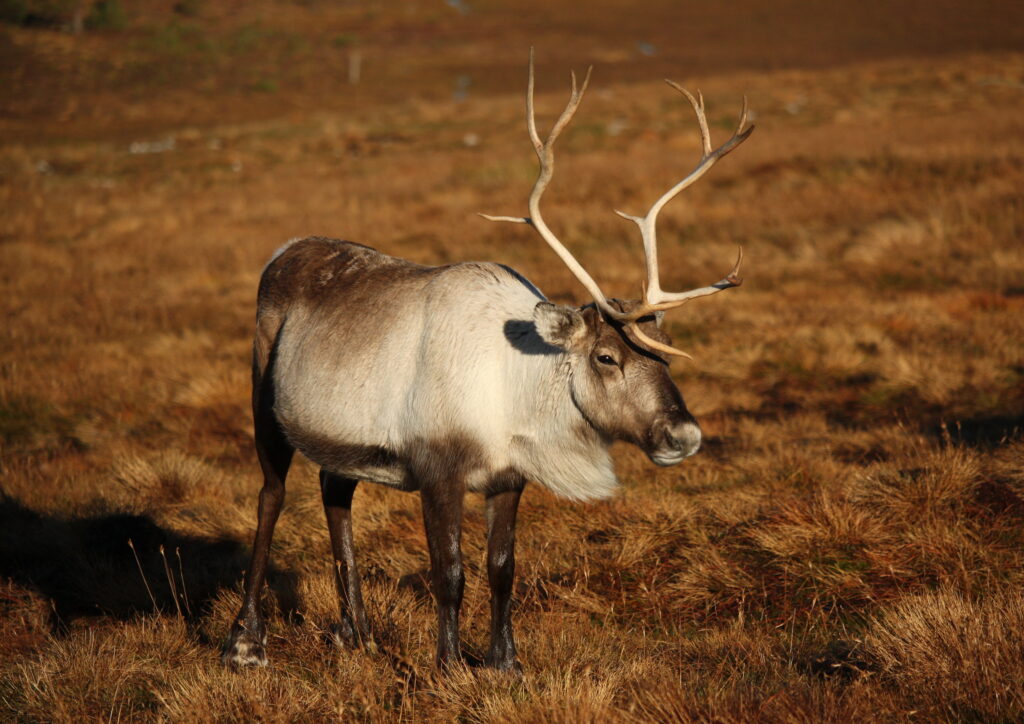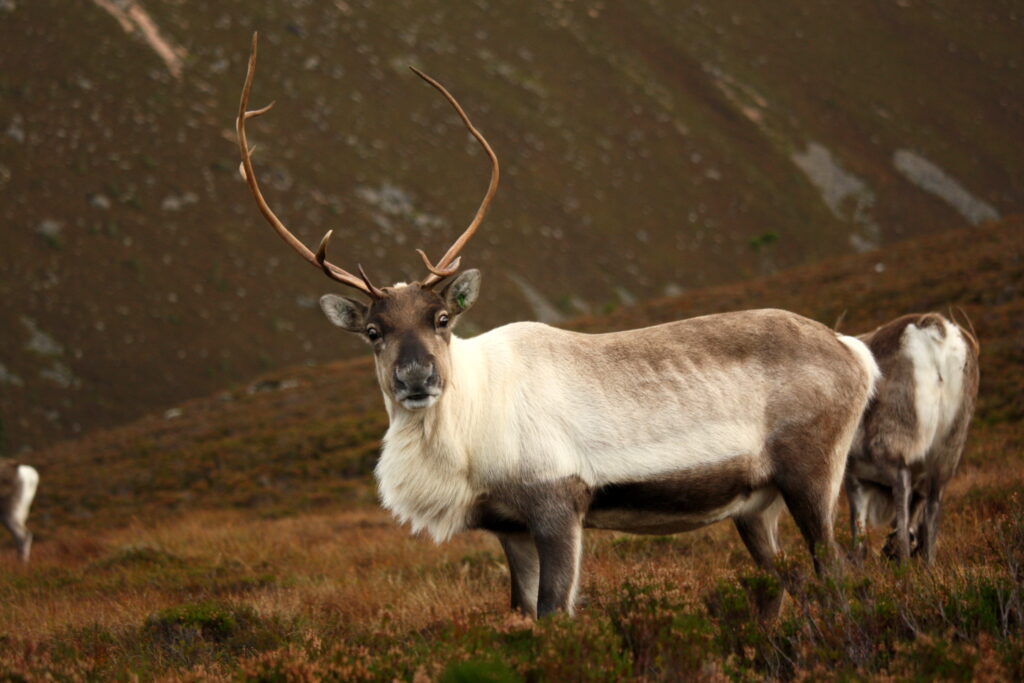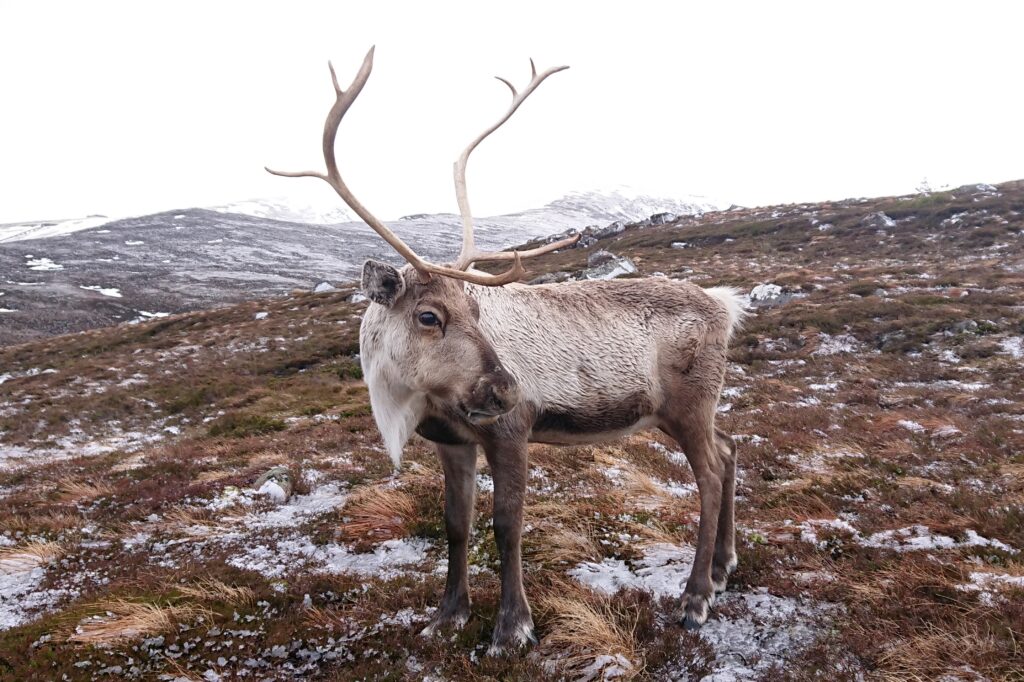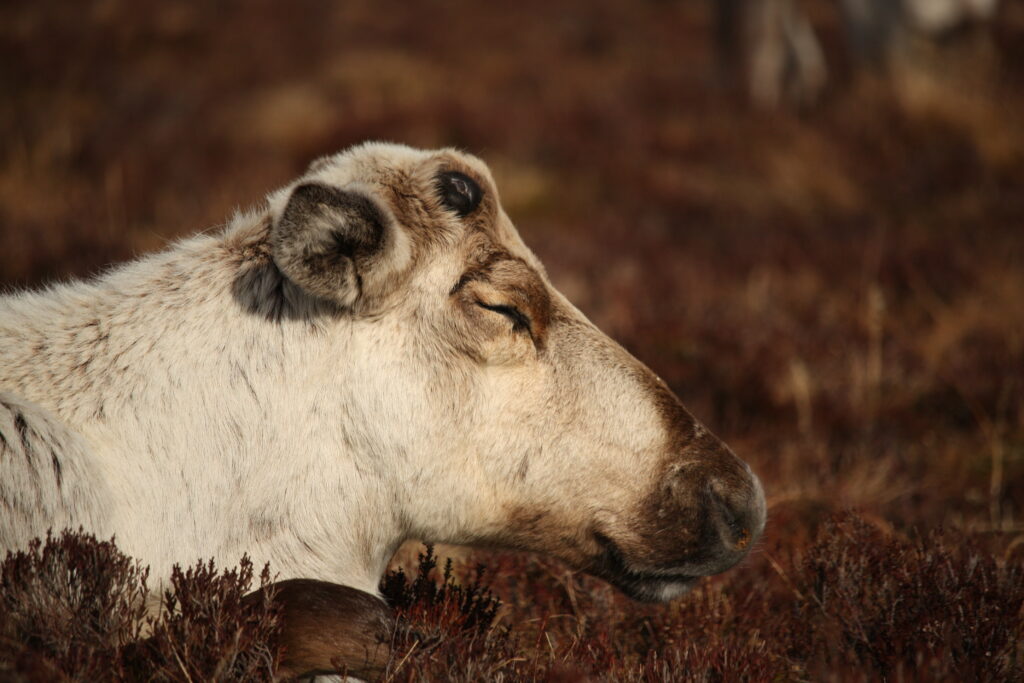The people of the northern hemisphere and reindeer have a long-interconnected history. In the days of the ice ages reindeer were known as far south as Spain and as one of the larger and least scary animals roaming the land (compared to cave lions and aurochs), they made natural prey for humans of all kinds. Reindeer antlers and bones found in archaeological sites in France age the Reindeer-Homosapien relationship at least 45,000 years old – although it is argued there is some evidence of Neanderthals hunting reindeer 60,000 years ago!

In the 40ish thousand years reindeer and humans have been in contact, our relationship has evolved. From hunter-gatherers hunting reindeer with spears and bows to rifles or to our Reindeer Centre in Glenmore and our Christmas Reindeer pulling sleds. In this blog, I am going to focus on how we lived with reindeer pre-domestication.
One of the more interesting sources we have on how people of the reindeer live with undomesticated reindeer are the peoples that still live or until recently have lived with the Caribou – most notably the various groups of inland Inuit in North America. (Note: Caribou and Reindeer are the same species, but the north American caribou has never been domesticated). For these people, as many other people of the reindeer, reindeer are the lifeblood of their communities.
Reindeer tend to be migratory animals (one subspecies of reindeer in Canada makes the largest migration of any land mammal!) and the humans around them have tended to take on nomadic or semi-nomadic habits as well. In many places, they haven’t needed to be with the reindeer the whole time but moved between pinch points of the migration routes – narrow mountain passes or land bridges between great lakes that the seemingly endless rivers of reindeer would be forced to cross, into the waiting arms of the local hunters. Life like this is boom and bust. A few times a year, the community will catch the great river of deer and during these times will feast. Much of the meat will also be preserved for the many winter months when the reindeer no longer pass through (as they are less mobile during the winter and stay hidden in wintering grounds). Outside of the major floods of reindeer, the odd one is to be found wandering, and much time is spent looking for fresh meat to aid hungry bellies. During the winter, in the coldest places, people in history have been known to survive on semi-frozen dried meat.

Many of these people lived almost exclusively on deer produce. In a carnivore diet, fat becomes essential; it contains much of the necessary vitamins for life that aren’t contained in meat alone. Thus, much of the animals were eaten, not just the finest cuts rump. In fact, those rump stakes we prize so highly are comparatively low in nutrients and were sometimes the parts of the animals given to the dogs.
The reindeer haven’t only been used for food, in almost all cultures of people of the reindeer, every bit of the animal is used. Clothing and boots are made from their skins – often the skin from the belly of the reindeer is chosen for the soles of shoes for its toughness; the hide from the back for coats and parkas due to its thickness and warmth; hoods, mittens and boot tops are made from the hide from the brow due to its suppleness; etc… The shelter the reindeer provide also extends to summer tents, where scrapped and tanned hides are stretched around (often) birch poles to form the semi-mobile summer home. To lash the tent together, many cultures make use of the long and strong sinews from the back of the reindeer. These are also used to sew the clothing together – they have the bonus of swelling when they get wet so that most well sewn seams are fairly watertight.

Reindeer antler and bone is also a useful material, antler is still commonly used for making knife handles and for fixings of all kinds. Reindeer House here in Glenmore is held together by reindeer antler (click here for proof)! The parts of the reindeer that remain can be used as ritual objects or donations back to the ecosystem. This respectful use of the whole animal is repeated through most people of the reindeer, even in people who now live with domesticated reindeer.
Beni

